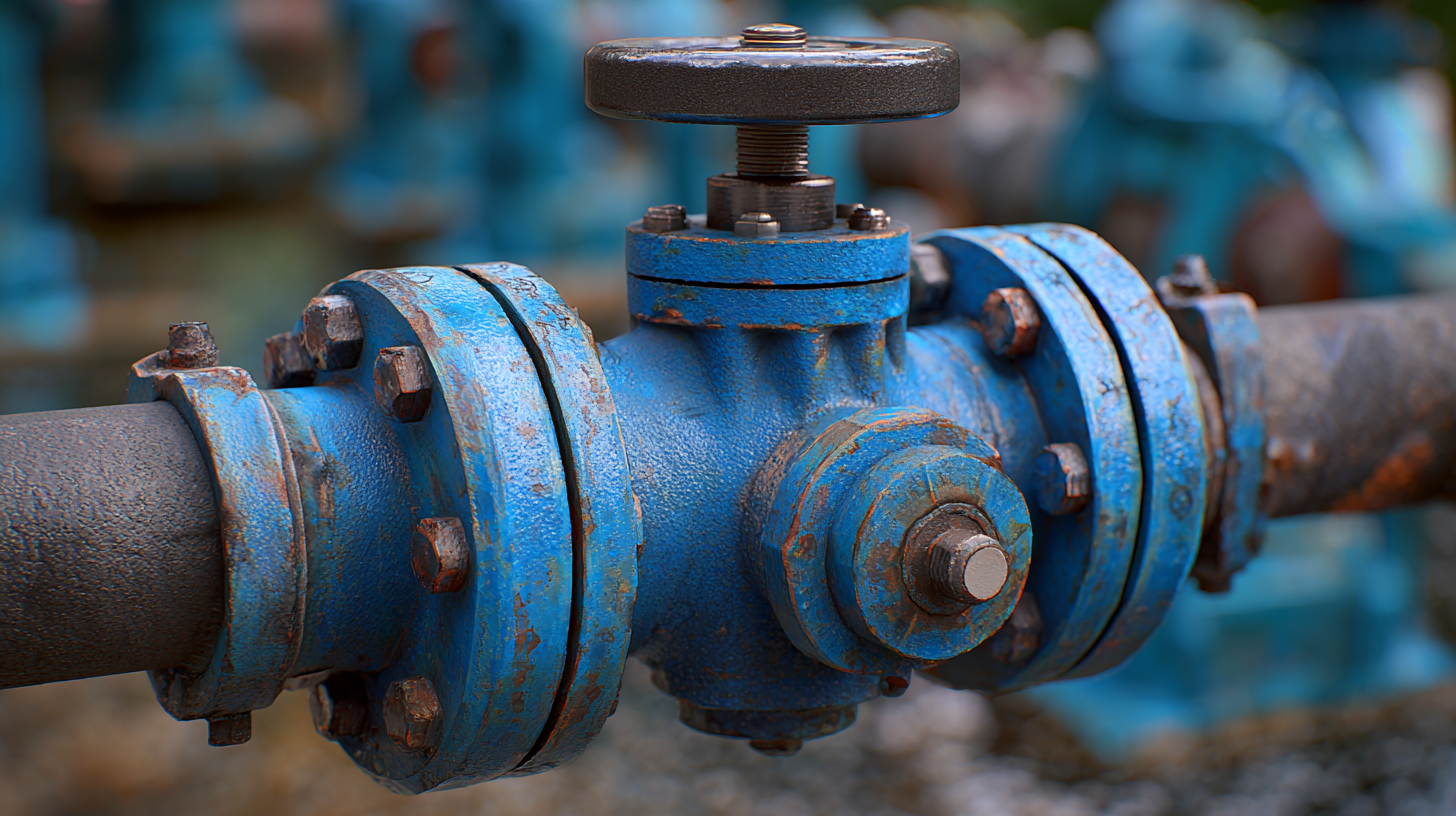
In the industrial sector, the selection of components such as plug valves is critical to ensuring operational efficiency and safety. According to a recent market research report from Grand View Research, the global valve market is projected to reach approximately $108.77 billion by 2025, with plug valves playing a significant role due to their reliability in fluid control and versatility across various applications. However, choosing the best plug valve can be daunting, as it requires a comprehensive understanding of various factors including material compatibility, pressure ratings, and end-user requirements. As industries increasingly focus on optimizing their processes while adhering to stringent regulatory standards, partnering with a qualified manufacturer becomes essential. This blog aims to delve into the challenges faced when selecting high-quality plug valves and offers insights into evaluating potential manufacturers to meet industrial needs effectively.

When evaluating different types of plug valves for industrial applications, it’s essential to consider the specific needs of your system. Plug valves are known for their simple design and reliable performance, but not all plug valves are created equal. There are several types, including lubricated, non-lubricated, and eccentric plug valves, each having its own set of advantages and challenges.
Lubricated plug valves, for instance, offer reduced friction and extend the valve's lifespan, but they may require more maintenance to ensure the lubricant is effective. On the other hand, non-lubricated versions are simpler and more resistant to wear but may not perform as well under high-pressure systems.
Furthermore, the material of the plug valve plays a critical role in its suitability for different applications. Common materials include cast iron, stainless steel, and various plastics, each chosen for their specific chemical resistance or temperature tolerance. It’s crucial to assess the operating conditions, including flow rate and fluid characteristics, to ensure optimal valve selection.
In industrial environments, where reliability is paramount, a thorough understanding of the different types of plug valves will help you make an informed decision that aligns with your operational needs.

When selecting the right plug valve for industrial applications, one of the most critical factors to consider is the material composition. According to a report by MarketsandMarkets, the global valve market is expected to reach $83.4 billion by 2025, with plug valves playing a crucial role due to their ability to provide leak-proof service and handle a variety of media. The choice of material can significantly impact the valve's performance, longevity, and resistance to corrosion, especially in harsh environments.
The most commonly used materials for plug valves include cast iron, stainless steel, and various plastics. For instance, stainless steel, which accounts for over 30% of the market share in valve materials, offers excellent resistance to corrosion and high temperatures, making it ideal for oil and gas applications. Conversely, non-metallic options, like PVC and CPVC, are preferable in chemical processing industries due to their excellent chemical resistance and lightweight nature. According to a study by the American Society of Mechanical Engineers (ASME), improper material selection can lead to increased maintenance costs and decreased safety, emphasizing the necessity for thorough analysis during the decision-making process.
When selecting the best plug valve for industrial applications, understanding flow characteristics and performance requirements is critical. The fluid dynamics involved can significantly impact operational efficiency and maintenance needs. According to a 2021 report by the International Society of Automation, improper valve selection can lead to a staggering 30% increase in energy consumption in facilities. Therefore, a thorough analysis of the specific flow requirements, including viscosity, pressure, and temperature, is essential during the selection process.
Tips for choosing the right plug valve include examining the type of flow—laminar or turbulent—as this will influence the valve's design. Opt for valves that offer reconfigurability for different flow rates when necessary. Additionally, consider the material of the valve, as certain materials will better withstand corrosive fluids or extreme temperatures. A well-chosen valve can enhance system reliability and performance while minimizing downtime and maintenance costs.
Furthermore, always consult performance curves provided by manufacturers to predict how a valve will perform under various conditions. A recent study published by Flow Control Magazine indicated that valves properly matched to specific flow characteristics can improve overall process efficiency by up to 25%. With the right knowledge and data, selecting a plug valve tailored to your industrial requirements can lead to significant operational gains.

When it comes to ensuring the longevity of plug valves in industrial applications, proper maintenance is crucial. Due to their robust construction, plug valves are often durable, yet they require routine care to perform optimally. Regular inspections should be conducted to identify any wear or damage to the seals or the plug mechanism, as these components are vital to maintaining effective sealing and preventing leaks.
One effective maintenance tip is to establish a regular cleaning schedule. Debris can accumulate in the valve, hindering its operation. For valves that experience heavy use or are exposed to harsh conditions, consider implementing a service routine akin to that of other industrial equipment. Just as mechanical components, like those in 2-stroke outboard engines, benefit from periodic servicing to enhance performance, plug valves should receive similar attention. Lubricating the valve seat and ensuring that any moving parts function smoothly can extend their service life significantly. Remember, proactive maintenance can save time and money in the long run by minimizing the risk of unexpected failures.
| Valve Size (inches) | Material | Pressure Rating (PSI) | Temperature Range (°F) | Maintenance Frequency (Months) |
|---|---|---|---|---|
| 2 | Cast Iron | 150 | -20 to 250 | 12 |
| 3 | Stainless Steel | 300 | -50 to 500 | 6 |
| 4 | PVC | 75 | 32 to 140 | 18 |
| 5 | Bronze | 200 | -10 to 300 | 12 |
| 6 | Carbon Steel | 150 | -20 to 400 | 8 |
When selecting plug valves for your industrial facility, it's crucial to avoid common pitfalls that can lead to costly mistakes. One of the most frequent errors is overlooking the specific requirements of the application. Each environment may have unique pressure, temperature, and media considerations that must be taken into account. Failing to match the valve's specifications with these parameters can lead to valve failure, leaks, or reduced efficiency.
Another common mistake is neglecting the materials of construction. The choice of materials should reflect the corrosive properties of the fluid involved, as well as the operating conditions. For instance, using a valve made from standard carbon steel in a highly corrosive environment can lead to premature wear and failure. Additionally, it’s essential to consider the valve size and compatibility with existing piping systems to ensure a proper fit. Inadequate sizing can result in flow restrictions or excessive wear, making it vital to consult manufacturer guidelines and industry standards during the selection process.